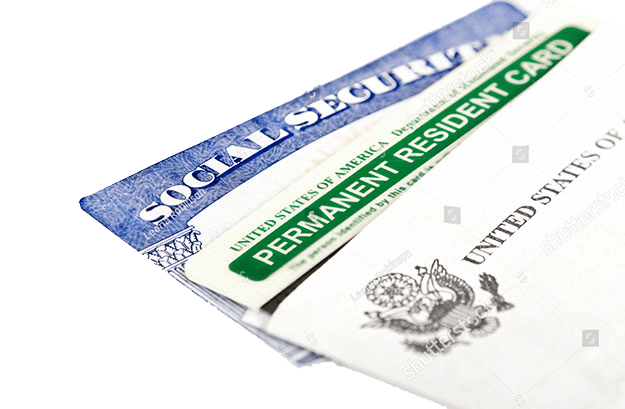FAMILY IMMIGRATION
Family Immigration
Foreign nationals have many options for immigrating or working in the United States. To apply for a Green Card, you must be eligible under one of the categories listed below. Once you find the category that may fit your situation, click on the link provided to get information on eligibility requirements, how to apply, and whether your family members can also apply with you.

Green Card for Fiancé(e) of U.S. Citizen
U.S. immigration law allows a U.S. citizen to petition for a alien fiancé(e) to obtain a K-1 nonimmigrant visa to travel to the United States and seek admission. Within 90 days after being admitted as a K-1 nonimmigrant, the alien must enter into a bona fide marriage with the U.S. citizen who filed the Form I-129F, Petition for Alien Fiancé(e), on his or her behalf.
After being admitted to the United States as a K-1 nonimmigrant and marrying the U.S. citizen petitioner within 90 days, the alien spouse can then apply for lawful permanent resident status in the United States (get a Green Card).

Naturalization
Naturalization is the process in which immigrants become citizens of the United States of America. This step is significant. It is the end of the immigration process for an immigrant. It provides the opportunity to file petitions for family members to obtain green cards and visas. For many, this path is a dream.
Relative Petitions
To promote family unity, U.S. immigration law allows both U.S. citizens and lawful permanent residents residing in the United States to file a relative petition for their family members. Submitting Form I-130 is the first step in helping an eligible relative apply to immigrate to the United States and get a Green Card. The filing or approval of this petition does not give your relative any immigration status or benefit.

Diversity Immigrant Visa
The Department of State annually administers the statutorily created Diversity Immigrant Visa Program. Section 203(c) of the Immigration and Nationality Act (INA) provides for a class of immigrants known as “diversity immigrants” from countries with historically low rates of immigration to the United States. For Fiscal Year 2024, up to 55,000 Diversity Visas (DVs) will be available. There is no cost to register for the DV program.
Applicants who are selected in the program (selectees) must meet simple but strict eligibility requirements to qualify for a DV. The Department of State determines selectees through a randomized computer drawing.

Student Visa
Visas are very specifically tailored to the requirements and necessities of each individual. For instance, if a student is enrolled in an educational program or course that is under eighteen hours a week, he or she only needs a visitor visa. If a student is completing over eighteen hours a week, a student visa is mandatory for the stay within the country.
Each consulate and embassy has its own rules and regulations when applying for a student visa, such as the interview policy procedure of an in-person meeting with the first time student visa applicant in question. When attempting the student visa process, it is always a good idea to contact a Tampa immigration lawyer for sound legal guidance.
An individual applying for a student visa must meet requirement criteria:
- Full-time enrollment at the institution
- Enrollment in an academic education program, rather than a program for vocational purposes
- The institution being applied for must be accepted by the U.S. Citizenship and Immigration Services (USCIS)
- Sufficient funds must be available for a self-support system throughout the entire duration of study
- Maintenance of a residence abroad that will be kept throughout the duration of study
- Proficiency in English, or to be enrolled in a program working toward English proficiency
Connect Below For Your Initial Consultation
Dambach Law is committed to excellence, whether you are an employer or an individual, you will receive the legal assistance that you need in your pursuit of legal immigration into the U.S.
Footer Consult Form
We will get back to you as soon as possible
Please try again later
The information on this website is for general information purposes only. Nothing on this site should be taken as legal advice for any individual case or situation. this information is not intended to create, and receipt or viewing does not constitute, an attorney-client relationship.
All Rights Reserved | Dambach Law | Iconic Web Design

